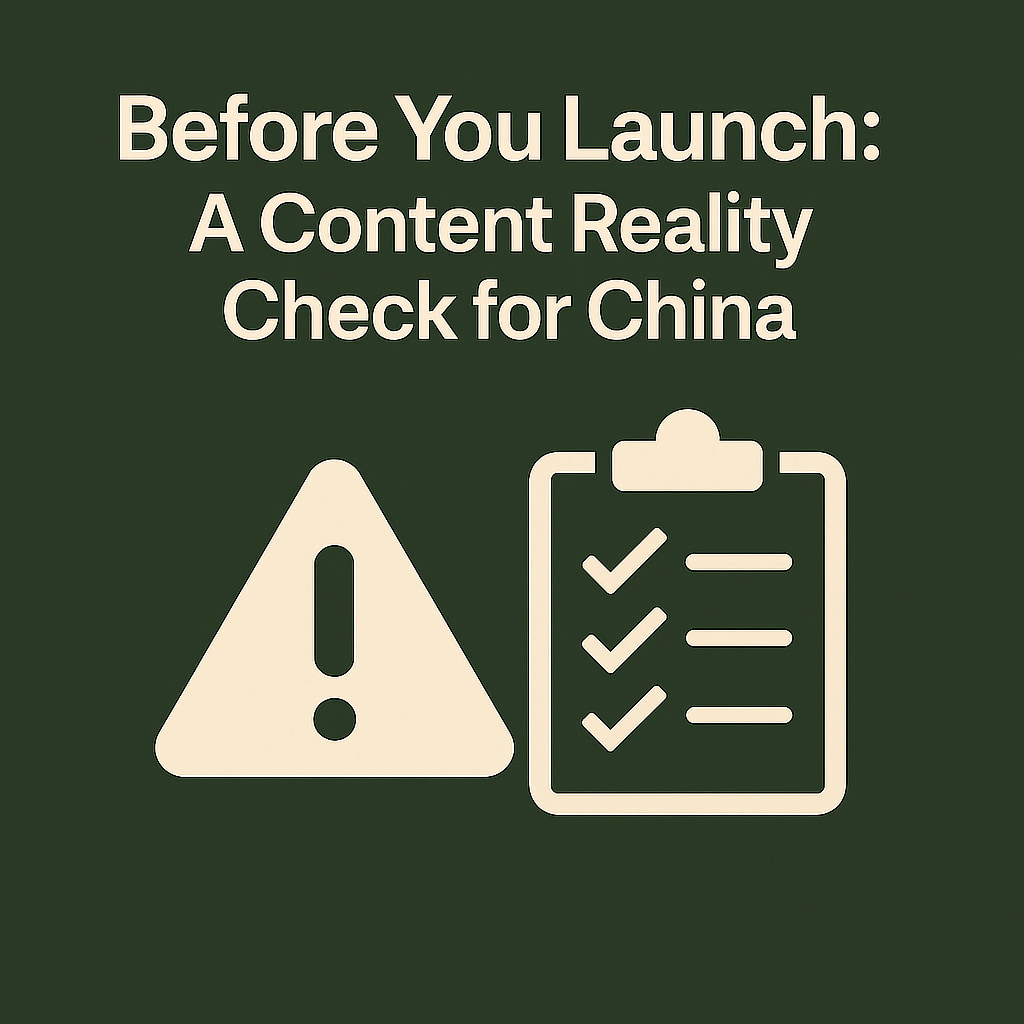How to Know If Your Content Strategy Really Works in China
By The Olivia
Content & SEO Strategist for China Market.
This post is part of the “Marketing in China” series. Click here to view the series introduction and why it was created.
Introduction
When brands plan for China, most start with their own communication goals.
Yet in a platform-driven market, visibility depends less on what a brand says and more on how its content fits into the structures already shaping user attention.
This piece outlines a diagnostic way to review your strategy — not to follow as a checklist, but to help identify whether your content logic and China’s platform logic are moving in the same direction.
I. Platform Reality: Visibility Has Its Own Logic
Across Rednote, Douyin, and Zhihu, exposure is structured by platform behavior loops.
What surfaces at the top isn’t always what looks the most polished; it’s what the system recognizes as engaging in its own language.
Each platform favors certain signals: tone, post rhythm, visual framing, or entry angle.
The question isn’t only “what are we saying?” but “how is the system reading it?”
Without understanding this baseline, brands may invest heavily in content that looks professional but never earns visibility within the platform’s flow.
II. Competitive Reality: You’re Competing for Algorithmic Trust
Most global brands entering China still benchmark against global peers.
But within Chinese platforms, you’re competing inside a local trust hierarchy — where consistency, relevance, and data feedback loops already exist.
Many local competitors have posted for months with a recognizable rhythm, tone, and network of reposts.
What they’ve built is not just awareness but algorithmic familiarity.
The point is not imitation. It’s understanding the kind of consistency the system already rewards — so your message lands inside an environment that recognizes it.
III. Audience Reality: Translation Doesn’t Equal Connection
Language localization is straightforward; voice adaptation is harder.
In China, what feels trustworthy often depends on how social the content sounds — not only what it says.
Brands that still write from a top-down perspective tend to sound detached.
The content that travels further usually mirrors how people talk to each other, not how brands talk to audiences.
Understanding this tonal distance requires qualitative reading — scanning how users describe usefulness, aspiration, or emotion in everyday context.
IV. The Alignment Test: A Strategic Reality Check
Before new production begins, strategy teams often benefit from one internal question:
Does our content structure match how visibility currently works in China?
Answering it well requires pattern awareness — how search, social, and video ecosystems overlap, and how each defines relevance in its own way.
When that alignment exists, even simple creative ideas travel further.
When it doesn’t, campaigns may look right on paper but stay invisible in practice.
V. Conclusion
China’s content environment rewards brands that observe before they act.
Those who take time to understand how attention is structured build campaigns that age well — because they fit how users actually find and engage with ideas.
What works elsewhere may not fail in China; it simply goes unseen.
The first step toward relevance is seeing how visibility really functions.
← Back to All Articles
← Learn more about my services
You May Also Like:
Content Distribution in China: How Platform Logic Shapes Visibility
Visibility on Chinese content platforms isn’t just about quality — it’s shaped by structure, fit, and user behavior.
Effective SEO in China Starts with Knowing the Platform Logic
Why SEO in China is less about checklists—and more about understanding how Baidu and Chinese users actually search.
Why Funnel Thinking Doesn’t Work in China
China’s user paths jump across platforms. This post shows why funnels don’t work — and how brands should rethink strategy.
Ready to take your content further?
Let’s build a strategy that resonates in the Chinese market.
THE OLIVIA WAY
© 2025 THE OLIVIA WAY. All rights reserved.
